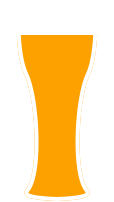

Flute Glass
Tall, thin, footed with a short stem, often gold-rimmed.
These glasses are delicate, and show off a beer’s lean, sparkling body.
This makes them inappropriate for heavy, murky beers, but perfect for light, sparkling beers such as fruit lambics and north German pilsners.


















